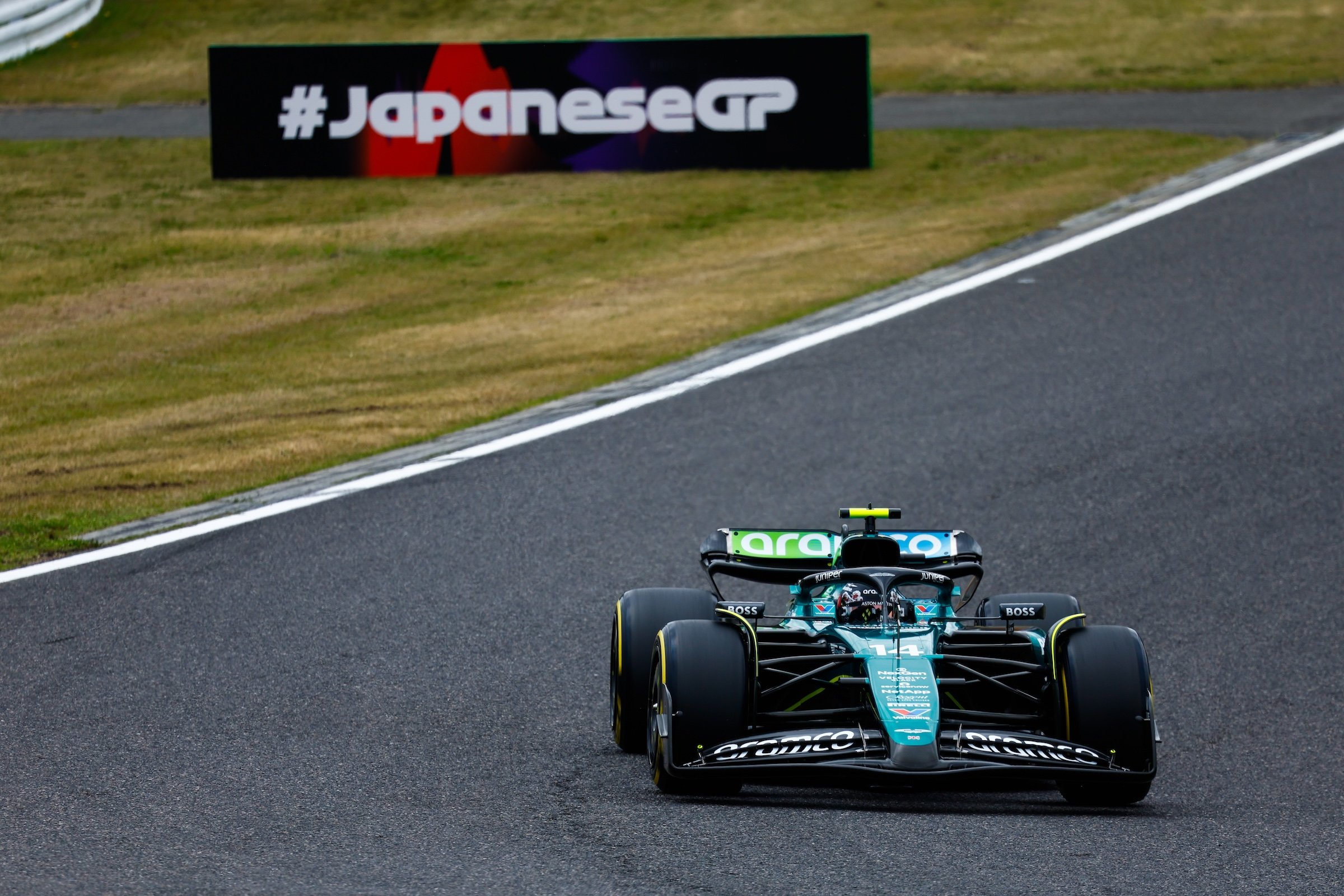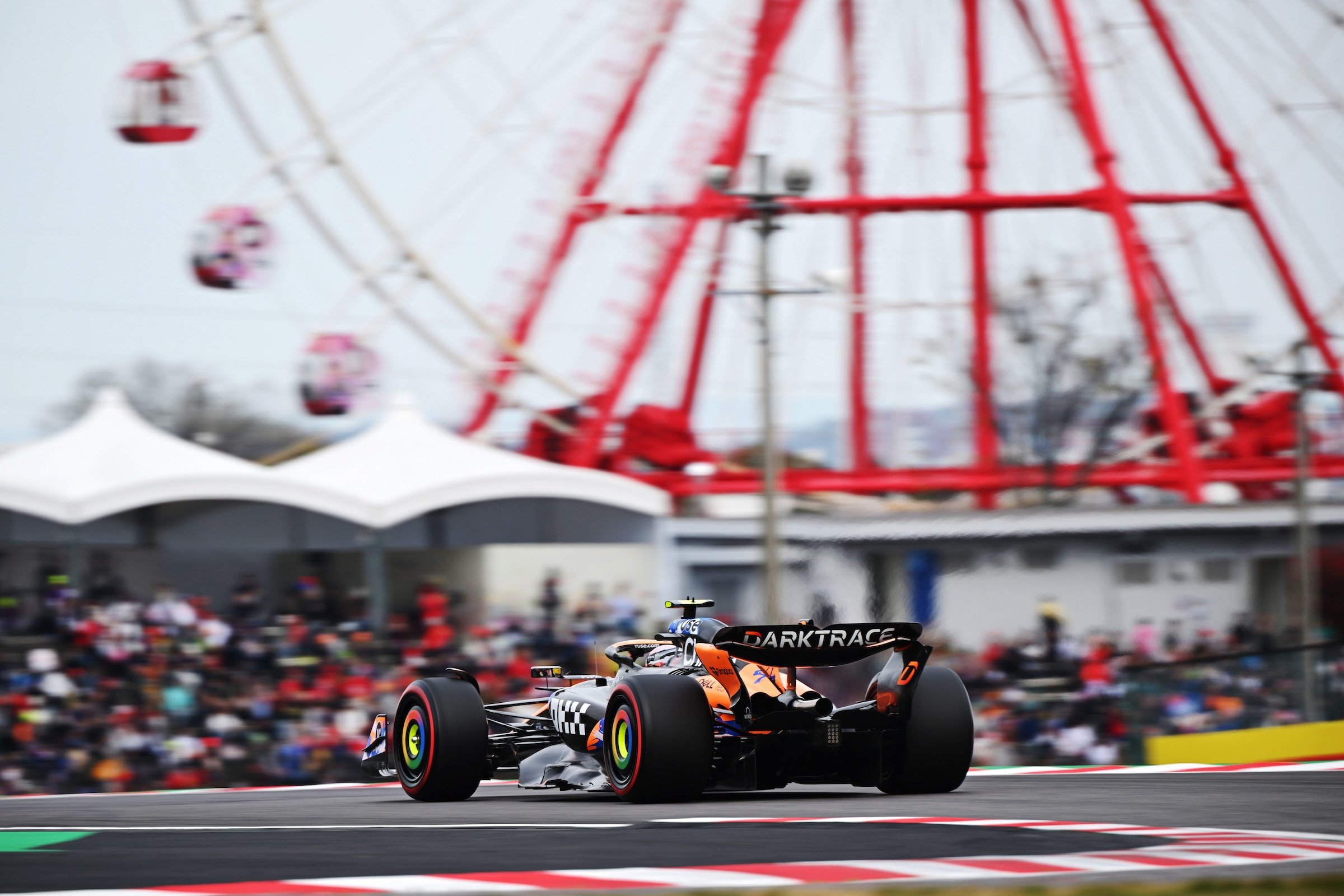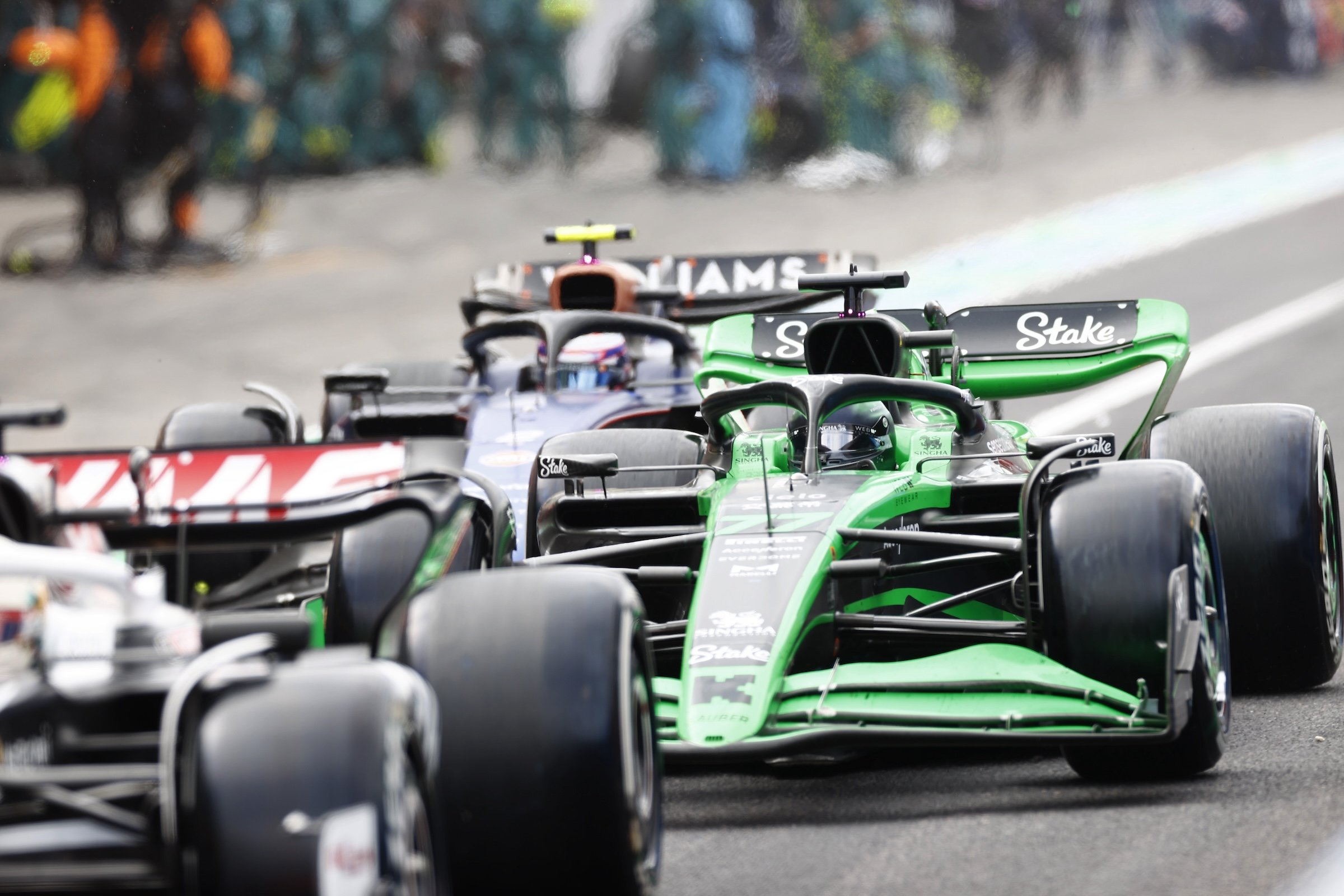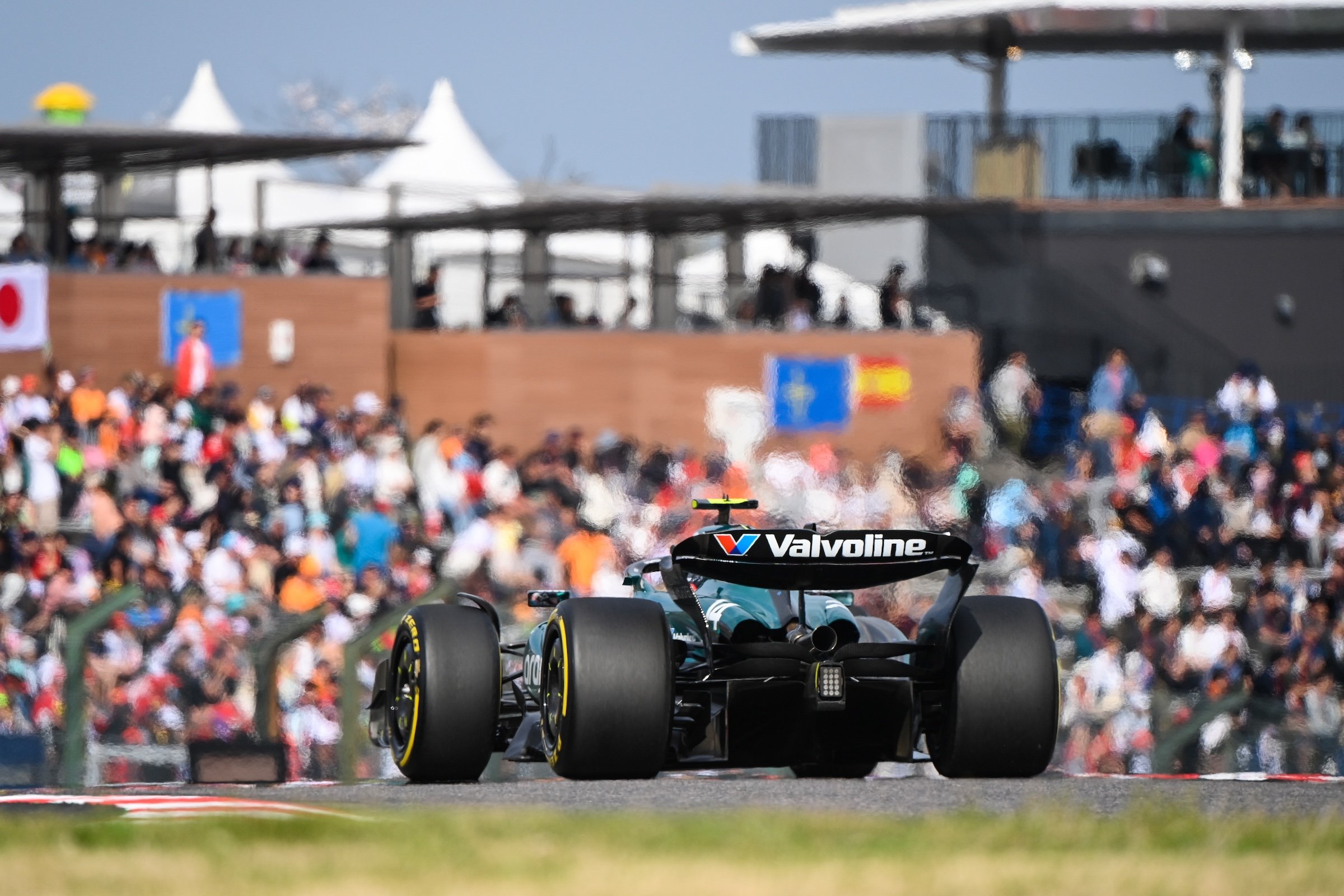In Pictures: Japan 2024

Formula 1 returned to Japan just over six months after its last visit to the country. This year, the Japanese Grand Prix took place in April for the first time in its history: right up to last year, the race was always scheduled for the second part of the season, in September or October. As a result, Suzuka has frequently crowned world champions – both in the drivers’ and manufacturers’ standings. The last two years have been no exceptions: in 2022, Max Verstappen sealed his second title at the venue, while last year Red Bull were crowned constructors’ champions.
The fourth event of the season coincided with the peak of the cherry blossom – or Sakura – season, between the end of March and the beginning of April. It’s also the very first time that the Japanese Grand Prix will be held at this time of year: the first Pacific Grand Prix took place at Aida on 17 April 1994, before moving to October in 1995. The early spring will also bring lower temperatures than the teams are used to in Japan, with average temperatures ranging between 8°C and 13°C.
Suzuka is a true classic: the 5.807-kilometer Honda-owned track tests every driver’s talents with a demanding layout characterized by a figure-eight layout, unique in Formula 1. It is one of the most popular circuits for fans and drivers alike, this is a thrilling venue to watch Formula One cars go wheel-to-wheel.
There have been 37 editions of the Japanese Grand Prix so far, 33 of which have been held at Suzuka. The remaining four took place at Fuji track, which is owned by Toyota. The most successful driver is still Michael Schumacher with six wins: the German also has the most pole positions (8) and podium finishes (9). In terms of team achievements, McLaren has the most victories (9) while Ferrari has the most pole positions (10).
The Suzuka circuit has 18 corners, some of which – such as Spoon, 130R, and the uphill combination between Turns 2 and 7 – are among the most famous on the world championship calendar. Less well-known are the two Degner corners, named after Ernest Degner, a German motorcycle racer of the 1950s and 1960s - Read here about Degner and how his name became part of this iconic circuit ( LINK )
FRIDAY
The first day of the Japanese Grand Prix, held for the very first time in April, featured cold conditions and rain. Air temperature in the two sessions never climbed higher than 20°C, while the track dropped to 17°C by the end of the second free practice, which was also affected by intermittent rain, meaning there was very little on-track action.
However, times in the first hour were representative, with Max Verstappen (Red Bull) setting the fastest lap in 1’30”056, ahead of team-mate Sergio Perez (1’30”237) and the Ferrari of Carlos Sainz (1’30”269). However, it wasn’t plain sailing in the morning session either, as there was an 11 minute interruption after Logan Sargeant crashed in the Williams.
Only 13 drivers went out on track in the second session, completing 71 laps between them: six of them (Hamilton, Leclerc, Sainz, Norris, Ocon, and Hulkenberg) only ran slick tires, all bar Hamilton who also tried the Medium, only running the Soft. The other seven (Piastri, Albon, Ricciardo, Tsunoda, Bottas, Zhou, and Magnussen) ran the Intermediate either all or part of the time.
SATURDAY
Saturday's third free practice session was busier than usual as teams tried to make up for lost time after rain washed out most of FP2 yesterday. Apart from the usual qualifying simulation work, all the teams tried to gather data by conducting long runs on various tire compounds, mainly focusing on the Soft and the Medium. The only exception was Aston Martin, whose drivers completed a long run on the Hard compound.
Qualifying was all about the Soft tires, and as predicted, they were only good enough for one timed lap. It's worth noting that the pole position lap time for the 2024 Japanese Grand Prix was almost seven tenths quicker than the fastest qualifying time from six months ago in 2023 (1’28”877). This significant increase in performance, using the same tire compounds as in 2023, was attributed to lower temperatures (with track temperatures 12°C cooler than Friday afternoon) and the obvious improvements in this year's cars compared to the previous year.
In the end, it was another pole position for Max Verstappen, a clean sweep across all four races held so far this season, the fifth in a row if one also takes into account last year’s final round, the Abu Dhabi Grand Prix. The three-times world champion was quickest in all three phases of qualifying, improving on every run, eventually getting down to a time of 1’28”197. For the first time this year, and also for the first time since last year’s opening round, the Dutchman will have his team-mate Sergio Perez (1’28”263) alongside him, the closest the Mexican has been to him all year. On the second row, we have Lando Norris (1’28”489) for McLaren and Carlos Sainz (1’28”682) in the Ferrari.
Verstappen received his Pirelli Pole Position Award from Jean Alesi. The 2001 Japanese Grand Prix marked the Frenchman’s final appearance in Formula 1. Alesi raced at Suzuka 12 times, achieving a third-place finish in 1994 with Ferrari. Additionally, he competed in the 1995 Pacific Grand Prix held at the TI Circuit in Aida, Japan.
““It was quite close at the end, I think overall this track is very sensitive with the tires, with the tarmac being really aggressive, and when you really want to go to the limit it doesn’t always work out. But nevertheless I think the most important [thing] is to be on pole. Of course you want every lap to be perfect, but around a track like this that’s not always the case. Overall, a very good day, a good starting position for tomorrow, and of course tomorrow is what counts.””
SUNDAY
Race Day was a lot warmer than on the previous days, making for some unknowns regarding how the tires would react to the hotter track temperatures.
At the start of the highly anticipated two-stop race, pole-sitter Verstappen executed a flawless start to maintain his lead into Turn 1, with the top five positions remaining unchanged. However, moments later, a red flag was waved following a collision between RB’s Daniel Ricciardo and Williams' Alex Albon at Turn 3. Both cars crashed into the barriers and were out of the race, though fortunately, both drivers emerged unscathed
Once repairs to the barriers were completed, the drivers returned to the grid in their original order at the time of the collision, with some choosing to change to fresh tires. Another standing start ensued, during which Verstappen successfully defended his pole position advantage.
The restart effectively shortened the race by two laps, with the original opening lap and the one to the grid for the second start still considered valid. Teams therefore adopted various strategic options, including the number of pit stops and their choice of available tire compounds. The most used compound was the Hard (545 laps, 60%), followed by the Medium (281 laps, 31%), with negligible differences in terms of degradation between them. While the Hard and Medium compounds were the most popular, the Soft compound (81 laps completed, 9% of the total) also played a significant role, either at the start or in the closing stages, despite demonstrating significant degradation.
By the end of his first stint, Charles Leclerc urged the team to change strategies and opt for just one mandatory pit stop, a decision that ultimately secured him a fourth-place finish ahead of Lando Norris in the McLaren.
Max Verstappen secured another victory in dominant fashion at the Japanese Grand Prix, marking his third consecutive win at Suzuka and the 57th win of his career. Sergio Perez contributed to Red Bull's success by ensuring a one-two finish, the team's third of the season and 31st in total.
Carlos Sainz achieved a third-place finish, marking his third podium in as many race starts this year after missing Jeddah due to appendicitis. This podium also represented Ferrari's 25th podium at the Japanese Grand Prix, a total surpassed only by McLaren's 27 podiums at the same event.
Home hero Yuki Tsunoda finished tenth, earning a valuable point for himself and for the Visa Cash App RB F1 Team.
Charles Leclerc was voted 'Driver of the Day' by the F1.com voting fans. Since then, Scuderia drivers have won this accolade in every race this season (4).
QUOTES FROM THE PODIUM
““It was very nice, the critical bit was the start - to stay ahead. And after that, the car got better and better for me throughout the race. Pit stops went well, strategy went well, couldn’t really have gone better. The last race was a little hiccup but happy to be back here and back on top. It’s fantastic to win here!””
““It was a good weekend for the team, especially with the start and restart. My second start was better but not enough to get Max. We were undercut by Lando so I had to push too much on the medium stint, but on the hards I was able to push and come back. I think we are in a good momentum, here last year was probably my worst weekend so if we are strong in places like this, I think we can be strong everywhere.””
““I had a good race so I’m very happy. It was quite tough out there with the degradation, but the clouds came and the degradation got easier so I thought the one-stop might be better. I had to overtake today and overtaking isn’t easy, it was tough out there. I knew I needed a very big delta to approach Lando and Charles and in the end we managed it, and I could get that podium.”
”
After the Japanese Grand Prix there will be two days of Pirelli tire testing on Tuesday 9 April and Wednesday 10 April with Stake F1 Team Kick Sauber and Visa Cash App RB Formula One Team, to develop constructions and compounds for next season.






































































































































